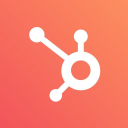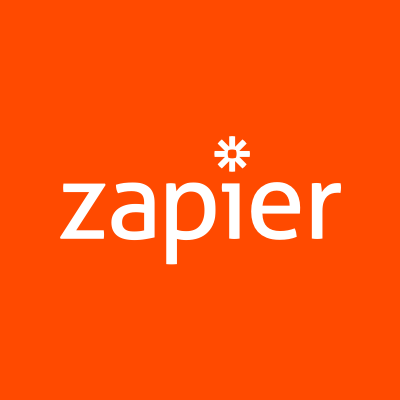How These Founders Built A $100K/Month Business Disrupting The Expert Network Industry
Hello! Who are you and what business did you start?
My name is Nikhil and I am one of the co-founders and the CTO of DeepBench. DeepBench helps businesses make better-informed decisions by connecting clients with expert individuals. We use technology to match client requests with the best-suited advisors quickly and cost-effectively.
We currently have a network of over 25,000 advisors, provide expert finding services to 450 clients, and have facilitated just under 2,000 consultations.

What's your backstory and how did you come up with the idea?
Yishi, Derek, Devin, and I met in the fall of 2017 in a class, New Enterprises, while studying at MIT. The three of them were in their first year of the Sloan MBA program and I was in my final year of the undergraduate program studying Computer Science.
Make your product excel at what it is meant to do and then people will start to consider you an expert. You don’t have to be the best at everything, just be the best at what you choose to do.
The class required students to split into groups that contained a hustler, a hipster, and a hacker and take a product from ideation to execution. The three others had worked with expert networks before and found them to be slow, expensive, unsecured, and disjointed in finding the right advisors. They thought technology could solve most of these problems and MIT would be a good place to build that out! I personally had not heard about expert networks before but was eager to learn about the consulting and startup spaces so I joined them (as the hacker).
During that class, we drew up the entire pipeline, from the time a request comes in, through outreach, onboarding, and scheduling to payment processing. For our first project, we stayed up pretty late doing the entire process manually and after that struggle, we immediately got started on automating it.
Towards the end of the summer, we were invited to be a part of the DeltaV cohort in New York and decided to take the opportunity. We made good headway that summer and that experience made me want to continue working on it through the next year alongside a Masters's program. Through that academic year, our advisor base and client list grew and we hired our first Client Associate. I have been working on DeepBench ever since!
Take us through the process of designing, prototyping, and manufacturing your first product.
The expert network concept was not novel in 2016 and so we had a baseline storyboard to iterate on.
Our first step was drawing out the pipeline: client reaches out with a request, DeepBench associate reaches out to potential candidates, advisors confirmability and willingness to speak with the client, the client is presented with consultation options, scheduling process back and forth and then follow up with payments and payouts.
We then broke each of those categories down into smaller sections and then discussed how complex and time-intensive they are as a way of prioritizing which aspects to automate first. We still have our pipeline and while most of it is automated, we constantly try to identify the slowest and most human-intensive aspects and try to automate it and speed it up.
There are three things that we focused on in our design: building a user interface applicable to a wider audience, conveying security, and emphasizing transparency.
A scalable user interface: through our use of tech, we can provide advisors to our clients at a far lower price point compared to other expert networks. As such we have opened up the concept of knowledge services to a wider set of industries and companies that are price sensitive. This meant building an intuitive user interface that applied to people in their sixties as well as those in their twenties, people in finance as well as those in healthcare, etc.
Conveying secureness: many of our clients use DeepBench to conduct due diligence on sensitive projects. As such security is of utmost importance. While we were confident that we had a secure system, we recognized a need to convey how much we prioritize that to our audience. This meant following the status quo on password security, providing explainers on how other users interact with the information users share, allowing users to download and delete information on our platform, etc.
Transparency: we started to work on DeepBench because we believe the world of knowledge sharing has not been fully tapped. A big part of this stems from people not understanding what expert networks are, why they are so expensive/pay so much, and know who and what the knowledge transfer is for. Take pricing, for example, we share what amount is received by the advisor and what is our cut, we offer discounts if the client is willing to share their name (because we have found it easier to source advisors when the client name is visible) and we explain all charges in the form of the work we have to do.
Describe the process of launching the business.
We never had an official launch and upon attending a friend’s startup’s launch, I immediately regretted not having one.
Our launch was triggered by an inbound project: the professor of the class in which we developed the business idea introduced us to a client and they asked us to help them find advisors for a project they were working on. We thought of what an ideal timeline would look like if we were automated and then worked into the nights to make it seem like it was.
In being able to deliver and receive positive feedback, we started reaching out to people in our personal networks and asking them to introduce us to individuals and firms that used expert networks, aiming to continue to deliver as expected, and using the struggle as a motivator to automate the process quickly.
Over the years we had several small “launches”. I remember prepping for a few days about getting our first client user on the platform: I went through the various paths that they might use numerous times and then drafted an email over the weekend that I would send to one client the following Monday inviting them to be our first beta user. That Monday I sent the email and announced to the team that I sent the email only to hear that our CEO had created a user account for three other clients over the weekend.
Since launch, what has worked to attract and retain customers?
The most important advice for aspiring entrepreneurs to consider is remembering your initial product idea, your inspiration, or your intent behind starting it all. Stay true to your initial intent and don’t be worried about ‘doing it all’. Make your product excel at what it is meant to do and then people will start to consider you an expert. You don’t have to be the best at everything, just be the best at what you choose to do. Continue to improve and strive for higher achievements.
One of the biggest things that I think helps DeepBench to constantly improve is talking to our most frequent users of the product - our account managers. They are the ones on the platform every day, working within every tab, and pushing the platform to its full potential. Talking to our account managers whether it's asking them questions about functionality or new feature requests is extremely helpful. This allows our developers to receive first-hand feedback and an inside look into things our clients actually want to see and get out of using our platform. There is no better way to operate a startup than with your client’s wants and needs at top of mind.
A big part of our increased traffic or sales leads come from happy customers giving great referrals. So many of our new clients over the years have come in through receiving a great recommendation from one of our current clients. It’s good to know that word of mouth can still be a prominent form of marketing in today’s world. Marketing efforts that have worked best for our team have been sticking with what feels organic. DeepBench likes sharing posts that align with our team culture and our interests. We have found that all the different social media platforms out there don’t work for everyone. Doing everything can be unmanageable and can be more harmful to your business than help it. Through the years I think we have found what works best for our team and the best way to reflect how we would like to communicate.
Don’t embark on the journey alone. I’ve always found the ups so much more enjoyable by being able to share them with others, and the downs so much more bearable by having others to shoulder them with.
LinkedIn is an important platform for our team because we can share exciting milestones, company updates, and even tips for our online followers whether it be our clients or advisors in our portal. Medium has always been a great piece of our brand - writing blog posts based on the wealth of different knowledge our team has to offer. DeepBench can connect people in any industry, geography, or role so you could say we have a good grasp on the major topics in today’s world.
Lastly, our newsletter is a more personalized way of communicating and staying in touch with our clients as well as possible future clients. The newsletter is an opportunity to let our more invested followers get an inside look at what is going on at DeepBench that month! Whether it be the CEO Listening Tour or our personalized guide to conducting expert interviews we want DeepBench’s most invested individuals to feel they always have an inside look at our latest endeavors.
Bringing customers back is something I think that DeepBench really does well. We have countless customers that have been with us since the start and still use us on all their major projects today. A big piece of keeping customers coming back for us is building a good relationship and keeping the channels of communication open and transparent. Between the pricing transparency and discounted rebooking rates we offer, our customers really feel they are receiving the best service at the best price possible. Those are two factors that really take precedence in the expert network business and they are strengths that we believe keep our customers happy with our service and keep them coming back.
How are you doing today and what does the future look like?
The DeepBench team is now at eight members and we currently have over 25,000 advisors in our system, service over 450 client organizations, and have facilitated over 2,000 consultations.
Q1 2021 is our best quarter in history by a longshot, and our goal for 2021 is to achieve profitability.
The expert network industry is rather expensive primarily because of how human-intensive it is; our biggest cost is salaries. Through automation and speed improvements, we aim to make our client associates extremely efficient such that they can handle more projects in the same time period. The most time-intensive operations include identifying good candidates for projects and customer support. As our database grows and we collect more data, the effect of recommendation algorithms kicks in and our technology will be able to do more and more of the identifying for us.
We are also conducting many user interviews to understand what are the major pain points with our platform so that we can improve how intuitive it is and reduce the need for customer support. Our goal is to enable seamless connections between clients and advisors quickly and inexpensively - and we are making huge headway in that goal.
What platform/tools do you use for your business?
DeepBench is a big fan of using third-party tools and we use far too many to list here. Outside the rather common ones, I’d like to give a shoutout to Logrocket for helping us discover bugs on production and Feathery for helping us with simplifying form development. Lastly, one of my favorite tools (not a startup but still a hidden gem) to measure how we measure up on SEO: Measure.
What have been the most influential books, podcasts, or other resources?
- Who moved my cheese? - Spencer Johnson
- The one minute manager - Ken Blanchard, Spencer Johnson
- How I built this - Guy Raz
Advice for other entrepreneurs who want to get started or are just starting?
Don’t embark on the journey alone. I’ve always found the ups so much more enjoyable by being able to share them with others, and the downs so much more bearable by having others to shoulder them with.

Lookup The Startup Curve: the graph points out a typical founder’s change in happiness over an arbitrary period of time following the conception of a startup. Working on DeepBench has been a roller coaster and I often struggled with dealing with the newfound fluctuations in my mood as a result of work. Seeing this graph offered some sort of validation in that what we were going through was normal. I found out about it very recently but can imagine it playing an important role in helping new founders brace themselves for the journey.
I had always thought of startups as the means to a success story. While things were going well, that continued to be the case, but when we faced our first hurdles, I struggled to deal with the idea that things might not work out and that all the time and effort I was putting in could amount to nothing. In debating whether I wanted to continue to pursue something that did not have a guaranteed output, I started to recognize and appreciate the experience I was having, one that I thought was a fantasy in Silicon Valley.
Are you looking to hire for certain positions right now?
We are always looking for strong candidates for the Client Associate position. If you are interested in applying, you can reach out to careers@deepbench.io.
Where can we go to learn more?

Download the report and join our email newsletter packed with business ideas and money-making opportunities, backed by real-life case studies.

Download the report and join our email newsletter packed with business ideas and money-making opportunities, backed by real-life case studies.

Download the report and join our email newsletter packed with business ideas and money-making opportunities, backed by real-life case studies.

Download the report and join our email newsletter packed with business ideas and money-making opportunities, backed by real-life case studies.

Download the report and join our email newsletter packed with business ideas and money-making opportunities, backed by real-life case studies.

Download the report and join our email newsletter packed with business ideas and money-making opportunities, backed by real-life case studies.

Download the report and join our email newsletter packed with business ideas and money-making opportunities, backed by real-life case studies.

Download the report and join our email newsletter packed with business ideas and money-making opportunities, backed by real-life case studies.





















